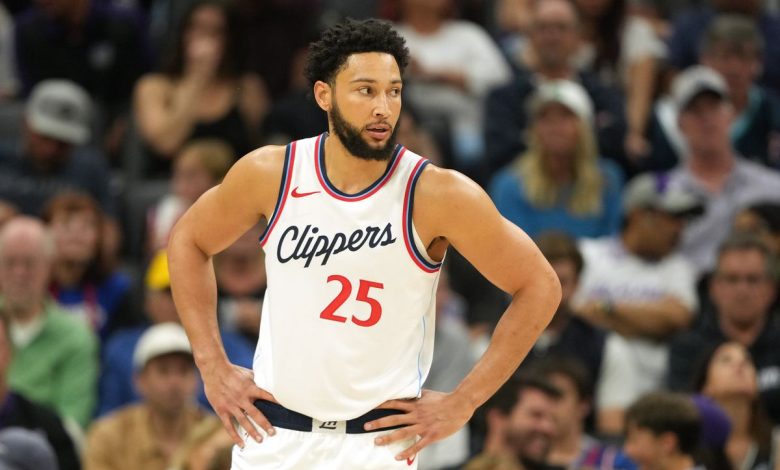Ben Simmons is expected to sign with the Boston Celtics, adding defensive prowess and playmaking to strengthen their roster for the upcoming NBA season.

The NBA offseason is always a period of speculation, strategic maneuvering, and roster reshaping. In recent whispers and reports, one of the most talked-about potential moves involves Ben Simmons heading to the Boston Celtics. If this deal materializes, it could significantly influence the Celtics’ future and reshape the Eastern Conference landscape.
This analysis delves into the background of Simmons’ career, the reasons behind the potential fit with Boston, the strategic implications of his signing, the challenges involved, and what this means for both Simmons and the Celtics moving forward.
Background: Ben Simmons’ Journey in the NBA
Ben Simmons, the Australian-born phenom, burst onto the NBA scene with the Philadelphia 76ers in 2017. Known for his exceptional athleticism, court vision, and defensive versatility, Simmons quickly established himself as one of the league’s most promising young stars. His unique skill set—combining size, speed, and playmaking—made him a matchup nightmare.
However, Simmons’ career has been marred by inconsistency, injuries, and notably, issues with shooting and confidence. His reluctance or inability to develop a consistent outside shot has often limited his offensive impact and led to criticisms over his playoff performances. The infamous 2021-2022 playoff series against the Atlanta Hawks, where Simmons’s reluctance to shoot became a focal point, marked a turning point in perceptions of his game.
Following a tumultuous period in Philadelphia, marked by injuries, controversy, and strained relationships, Simmons was eventually traded to the Brooklyn Nets in a deal that was largely viewed as a reset for all parties involved. However, Simmons’s fit with the Nets has been uncertain, especially given his struggles to regain form and confidence after back surgery and mental health concerns.
Despite these challenges, Simmons remains a player with immense defensive ability, elite playmaking, and a high basketball IQ. His potential to transform a team’s defensive schemes and facilitate offense remains significant when he is at his best.
Why the Boston Celtics? A Strategic Fit
The Boston Celtics, a storied franchise with a rich history of success, are in a period of transition. After falling short in the postseason in recent years despite a talented roster led by Jayson Tatum and Jaylen Brown, the team seeks to add complementary pieces that can elevate their championship contention.
Defensive Strengths and Needs:
The Celtics have historically prioritized defense, and Simmons’s defensive prowess fits seamlessly into this philosophy. His ability to guard multiple positions, disrupt passing lanes, and anchor a team’s defense could be invaluable.
Playmaking and Ball Movement:
Boston’s offense has often relied heavily on Tatum and Brown creating their own shots. Simmons’s exceptional court vision and passing ability can facilitate a more dynamic, ball-moving offense, alleviating some offensive pressure on the stars.
Rebounding and Transition Play:
Simmons’s athleticism makes him an excellent rebounder and transition threat. His presence could help Boston capitalize on fast-break opportunities, a key factor in winning playoff games.
Complement to Existing Core:
Adding Simmons provides a versatile pairing with Jayson Tatum. Together, they could form a formidable defensive and playmaking tandem, creating mismatches for opponents.
Cost and Contract Flexibility:
While Simmons’s contract is sizable, Boston’s cap flexibility and strategic roster management could make this trade feasible, especially if the Celtics view Simmons as a long-term piece rather than a short-term fix.
The Potential Impact on the Celtics’ Roster and Strategy
1. Defensive Anchoring:
Simmons’s elite perimeter defense would bolster Boston’s overall defensive rating. His ability to defend multiple positions means Boston could switch more aggressively on screens, disrupt opponents’ offensive flow, and create turnovers.
2. Playmaking and Offense:
Inserting Simmons into the starting lineup could transform Boston’s half-court offense. Rather than relying solely on Tatum or Brown to generate offense, Simmons’s passing can facilitate ball movement, open up shooters like Marcus Smart, and create easy scoring opportunities.
3. Rebounding and Transition:
Simmons’s rebounding ability means fewer second-chance opportunities for opponents and more fast-break chances for Boston. This could lead to increased scoring efficiency and momentum swings.
4. Space and Spacing Concerns:
One challenge is Simmons’s limited shooting range. The Celtics would need to employ strategic spacing, possibly using shooters like Smart, Brogdon, or emerging perimeter players to prevent defenses from clogging the paint.
5. Leadership and Culture:
Simmons’s experience, especially in high-pressure playoff situations, adds a veteran presence. His defensive mindset and basketball IQ could help Boston maintain a competitive edge and foster a winning culture.
Challenges and Concerns
1. Shooting and Floor Spacing:
Simmons’s inability or reluctance to shoot outside, especially beyond 3-point range, remains a major concern. Opponents could sag off him, clog the lane, and neutralize Boston’s offense unless the team employs creative spacing strategies.
2. Confidence and Mental Toughness:
Simmons’s mental health struggles and confidence issues have been publicly documented. His performance can fluctuate, and the pressure of Boston’s high expectations could exacerbate these challenges.
3. Fit with Existing Stars:
Integrating Simmons with Tatum, Brown, and other key players requires careful coaching and chemistry building. Overlapping skill sets or conflicting roles could hinder team cohesion if not managed properly.
4. Injury History:
Simmons has dealt with injuries, including back issues and knee soreness. Durability concerns could impact his availability during critical stretches.
5. Trade and Contract Dynamics:
The logistics of acquiring Simmons involve salary cap considerations, trade assets, and draft picks. The Celtics would need to weigh the cost of trading valuable assets versus the potential benefits Simmons brings.
Broader NBA Context: The Significance of the Move
If the Celtics successfully sign Simmons, it signals a willingness to embrace high-upside, defensive-minded players with some offensive limitations—similar to the successful models seen with players like Draymond Green or Andre Iguodala.
This move could inspire other teams to prioritize versatile defenders and playmakers, even if they lack shooting. It also emphasizes the evolving value placed on defense and basketball IQ, especially in the playoffs.
Furthermore, Simmons’s arrival in Boston could trigger a ripple effect across the league. Other teams might explore similar trades or signings, seeking to emulate Boston’s strategic emphasis on defense and playmaking.
The Future Outlook: What Could Happen
Optimistic Scenario:
Simmons regains confidence, improves his shooting somewhat, and fits seamlessly into Boston’s system. The Celtics become a top-tier defensive team with dynamic ball movement, making deep playoff runs and contending for a championship.
Realistic Scenario:
Simmons provides elite defense and playmaking but remains limited offensively. Boston leverages his strengths while masking his weaknesses through strategic lineups, ultimately reaching the conference finals or semifinals.
Pessimistic Scenario:
Injuries, confidence issues, or poor fit hinder Simmons’s performance, leading to underwhelming results. The trade assets spent on Simmons might not yield the desired return, setting back Boston’s progress.
A Bold Move for a High-Reward Player
The potential signing of Ben Simmons by the Boston Celtics encapsulates the modern NBA’s emphasis on versatility, defense, and basketball IQ. While challenges remain—particularly regarding shooting and confidence—the strategic fit appears promising.
For Boston, Simmons offers an opportunity to elevate their defense, facilitate offense, and create a more dynamic, adaptable team. For Simmons, Boston represents a fresh start and a chance to re-establish himself as a top-tier player.
If this move comes to fruition, it could mark a pivotal chapter in both Simmons’s career and the Celtics’ quest for another championship. It exemplifies the league’s evolving landscape—where strategic fits, high potential, and bold moves define the path toward success.









